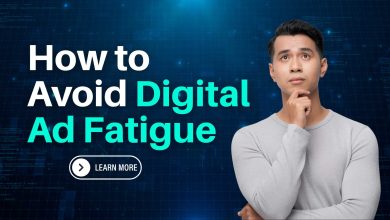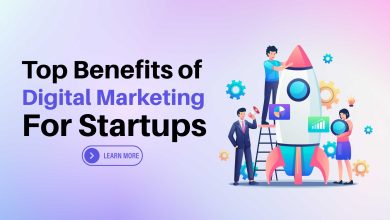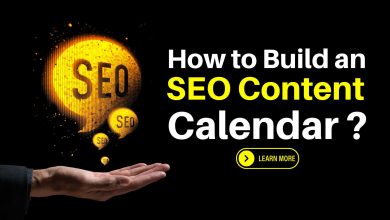360-Degree Digital Marketing: Maximizing Online Success
Introduction
In the fast-paced and ever-evolving world of digital marketing, businesses are constantly seeking innovative ways to engage with their target audience, build brand visibility, and drive conversions. Traditional marketing methods have given way to a more comprehensive and integrated approach known as 360-degree digital marketing. This holistic strategy leverages multiple channels, including website design, website content, email marketing, multimedia, social media, SEO, blogging, display ads, online PR, and PPC ads, to create a seamless and impactful marketing experience.
I. Website Design: Creating a Captivating Online Presence
Website design plays a pivotal role in 360-degree digital marketing as it forms the foundation of a company’s online presence. A well-designed website not only attracts visitors but also provides an optimal user experience. Elements such as layout, navigation, mobile responsiveness, and intuitive user interface contribute to creating a positive first impression and encouraging engagement.
II. Website Content: Compelling Messaging for Target Audiences
Website content is the backbone of digital marketing efforts, acting as a bridge between businesses and their customers. High-quality, relevant, and engaging content helps businesses establish thought leadership, convey brand messaging, and provide valuable information to their target audience. Content optimization techniques, such as incorporating relevant keywords and using persuasive storytelling, enhance the visibility and effectiveness of website content.
III. Email Marketing: Nurturing Relationships and Encouraging Conversions
Email marketing remains a powerful tool for engaging customers throughout their journey. By building targeted email lists, crafting personalized campaigns, and utilizing automation, businesses can nurture leads, build relationships, and encourage conversions. Effective email marketing strategies involve segmenting audiences, designing attention-grabbing emails, and measuring campaign success to optimize future efforts.
IV. Multimedia: Enhancing Engagement and Brand Identity
The use of multimedia, including videos, images, and infographics, has become increasingly prevalent in digital marketing. These visual elements capture attention, evoke emotions, and enhance brand identity. Implementing video marketing strategies, leveraging user-generated content, and monitoring multimedia performance are essential components of a successful 360-degree marketing approach.
V. Social Media: Amplifying Reach and Building Brand Loyalty
Social media platforms have revolutionized the way businesses interact with their target audience. A robust social media strategy involves creating compelling content, engaging with the community, leveraging influencer marketing, and analyzing performance metrics. By utilizing social media analytics, businesses can refine their strategies, amplify reach, and foster brand loyalty.
VI. SEO: Optimizing for Organic Visibility
Search engine optimization (SEO) is fundamental to achieving organic visibility and driving targeted traffic to a website. Understanding SEO best practices, conducting keyword research, optimizing on-page elements, building high-quality backlinks, and staying updated with algorithm changes are crucial for enhancing search engine rankings. Implementing effective SEO strategies allows businesses to establish authority and remain competitive in the digital landscape.
VII. Blogging: Establishing Thought Leadership and Building Authority
Blogging is an integral part of content marketing, providing a platform for businesses to showcase their expertise and establish thought leadership. By consistently creating valuable and informative blog posts, businesses can drive traffic, engage with readers, and nurture leads. Guest blogging and collaborations further enhance visibility and credibility within the industry.
VIII. Display Ads: Capturing Attention and Driving Conversions
Display advertising plays a significant role in digital marketing by capturing the attention of potential customers and driving conversions. Effective banner ad design, careful ad placement, targeting the right audience, and implementing retargeting strategies contribute to the success of display ad campaigns. Analyzing performance metrics allows businesses to optimize their ad campaigns for maximum impact.
IX. Online PR: Building Credibility and Reputation
Online public relations (PR) activities are essential for building credibility and reputation in the digital space. Press releases, media outreach, influencer partnerships, and brand collaborations contribute to a positive brand image and generate valuable publicity. Online PR efforts help businesses establish trust and credibility among their target audience.
X. PPC Ads: Driving Targeted Traffic and Conversions
Pay-per-click (PPC) advertising allows businesses to drive targeted traffic to their website and achieve quick results. By creating compelling ad copy, utilizing relevant keywords, and optimizing landing pages, businesses can maximize the effectiveness of PPC campaigns. Continuous monitoring, testing, and refining of PPC ads ensure optimal return on investment.
Conclusion
In today’s digital landscape, a 360-degree approach to marketing is crucial for businesses aiming to stand out, engage with their target audience, and achieve online success. By harnessing the power of website design, website content, email marketing, multimedia, social media, SEO, blogging, display ads, online PR, and PPC ads, businesses can create integrated campaigns that leave a lasting impact. Embracing these key elements of 360-degree digital marketing empowers businesses to navigate the digital landscape successfully and drive meaningful results in an ever-competitive market.



